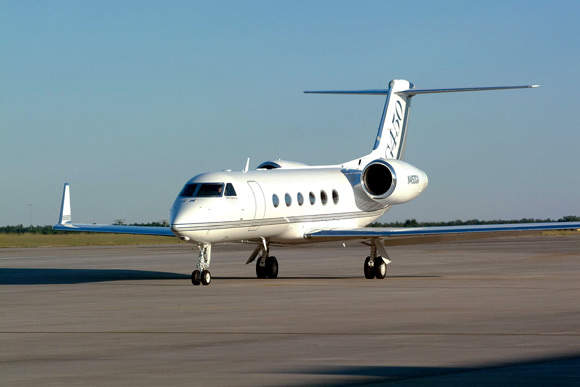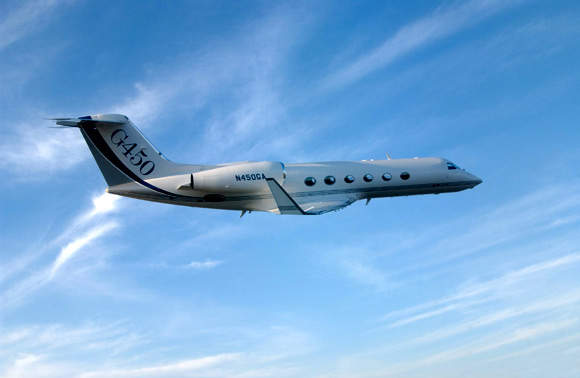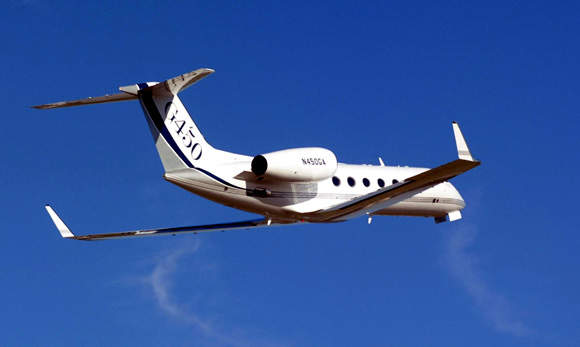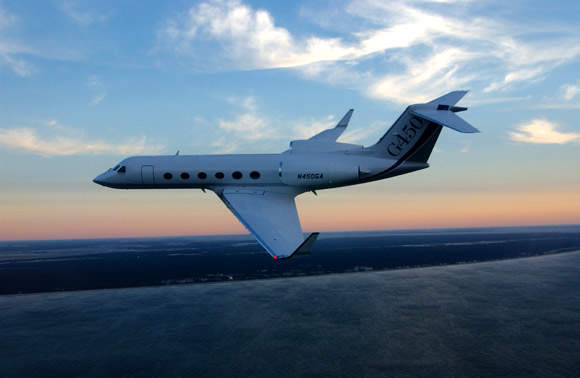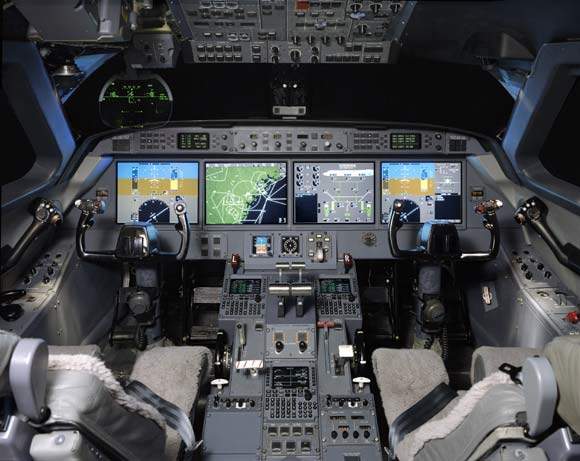Gulfstream Aerospace, based in Savannah, Georgia, first displayed the long-range, large-cabin G450 business jet in October 2003, but the G450 development programme began in 2001 while the development of the G550 business jet was underway.
The first flight took place in April 2003. FAA type certification was awarded in August 2004 and in November 2004 the European Aviation Safety Agency validated the FAA certification.
In January 2006, the G450 received certification from the civil aviation authority of the Commonwealth of Independent States. As of September 2008, 90 G450 aircraft were in service, with an approximately 99.77% dispatch reliability rate.
In June 2008, Gulfstream Corporation received a $1.9bn contract from Netjets to provide 20 G450 jets. The deliveries will begin in 2012 and are expected to be completed by 2016, with four jets delivered each year from 2012 through 2016.
The contract also includes $250m earmarked for a long-term maintenance support. As of June 2008, there were around 55 G450s in the Netjet’s fleet.
Record-breaking flights
The G450 aircraft entered service in May 2005. In the week after entering service the aircraft established a new intercontinental city-pair speed record with a flight of 3,550nm from Chicago to London in seven hours and fifteen minutes at an average speed of Mach 0.85.
In November 2005 the G450 set another new city-pair speed record, flying 3,290nm from Washington DC, to Luton, England, in six hours and 12 minutes, at an average speed of Mach 0.85.
Performance
The aircraft can carry up to 19 passengers. Carrying eight passengers, the aircraft has a range of 8,055km – equivalent to non-stop from Madrid to Caracas or Dallas to Paris, even on a hot day.
The aircraft can cruise at an altitude up to 13,715m (45,000ft), which is well above commercial airline traffic, and at speeds up to Mach 0.88 (935km/h). It can climb to 41,000ft in 23 minutes.
The aircraft has a maximum take-off weight of 33,520kg and landing weight of 29,935kg. The take-off and landing field lengths are 1,660m and 970m respectively.
The G350, G450, G500 and G550 business jets share the same pilot rating and many of the aircraft systems are also shared.
The G450 aircraft has completed around 67,198 flight hours with more than 33,240 landings.
Design
The aircraft has a rear engine, T-tail configuration with low mounted wings. The airframe is of light alloy construction with advanced carbon composite ailerons, spoilers, rudders and elevator.
The G450 aircraft design includes the proven wing, winglet and tail unit design of the G400 aircraft, a stretched fuselage 0.30m longer than the G400 and the flight deck and nose section of the G550.
The aircraft design is a derivative of the GIV and GIV-SP but shares many similarities with the ultra long range G550, for example both aircraft have the PlaneView cockpit with four large flight displays and the Honeywell Primus Epic avionics and visual guidance system (VGS).
Both G450 and G550 have the Gulfstream enhanced visual guidance system (EVS), which provides the pilot with clear idea of runway markings, taxiways and the surrounding landscape at night or in extremely bad weather conditions.
Flight deck
The PlaneView cockpit has four large liquid crystal flight displays, a Gulfstream enhanced vision system (EVS) with a Honeywell HUD 2020 head up display and a cursor control device. The EVS, developed by Gulfstream and Kollsman, is the first vision system of its type to be certified by the Federal Aviation Administration. The vision system gives the pilot a heightened level of situational awareness and allows greater safety.
In January 2008, the FAA certified the Gulfstream synthetic vision-primary flight display (SV-PFD) system and the Gulfstream / Kollsman second-generation EVS II for the G450. SV-PFD displays three-dimensional, colour terrain images from the Honeywell enhanced ground proximity warning system (EGPWS). EVS II is 10kg lighter with four times the computational power and memory of the previous EVS.
The aircraft is fitted with a Honeywell Primus Epic avionics suite. The avionics systems are installed forward of the cabin door.
Cabin
The cabin can seat up to 19 passengers. It can be customised to the operator’s requirements, for example with showers, an aft stateroom, galleys with countertop cooking, exercise bicycles rated to handle 2G bank angles, surround sound entertainment systems, multiple flat panel monitors, satellite telephone and DIRECTV, broadband multiLink internet access (BBML), Brazilian mahogany and birds-eye maple wood cabinetry, and a choice of club seats and settees, etc.
The cabin has three separately controlled temperature zones with 100% fresh air air-conditioning and 12 heated oval widows.
Engines
The aircraft is powered by two Rolls Royce Tay Mark 611-8C turbofan engines each developing 61.6kN.
The engines are housed in nacelles of the same design as the G550. The engines are equipped with full authority digital engine control and thrust reversers.
The aircraft has a Honeywell auxiliary power unit model 36-150GIV providing engine air start and run to altitudes up to 11,280m (37,000ft).

